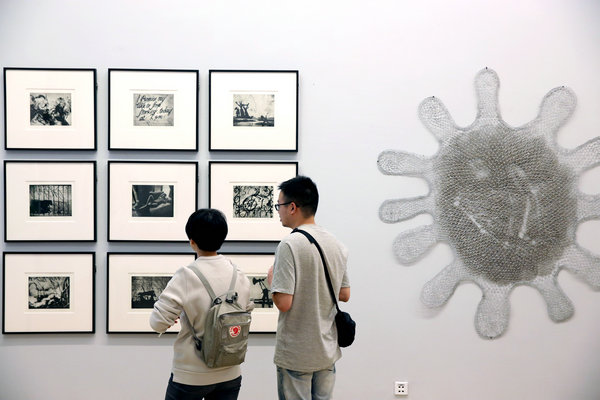

 |
|
The Beijing International Art Biennale in 2015 features a show titled Memory and Dream.[Photo by Jiang Dong/ China Daily] |
The Beijing International Art Biennale will return to the National Art Museum of China in September 2017, with the seventh exhibition themed "Silk Road and the world's civilizations".
The organizing committee that comprises the China Federation of Literary and Art Circles, the Beijing municipal government and the China Artists Association is inviting artists from home and abroad to submit work to discuss the spirit of the Silk Road in a different world order today.
In ancient times, the road was a network of overland and sea routes used for trade and cultural exchanges between China and other countries.
"Although many sites along the Silk Road have already disappeared, its call for communication and mutual development is still what today's world should strive for," says Liu Dawei, chairman of the China Artists Association, who initiated the art biennale in 2003.
Since its birth, the biennale has been dwelling on the contemporary evolution of traditional forms of painting and sculpture, and their roles in merging Eastern and Western cultures.
The first exhibition in 2003, titled Originality: Contemporaneity and Locality, displayed more than 400 works by artists from 45 countries and regions, reflecting such common issues as globalization and cultural preservation.
The latest edition in 2015, titled Memory and Dream, drew a much larger base of participants from 96 countries whose works totaled nearly 700 pieces.
Zeng Chenggang, a sculptor and art professor at Tsinghua University in Beijing, was featured in the second and fourth exhibitions. He says the biennale emphasizes new developments in painting and sculpture, and provides an independent perspective to approach the fundamental tasks of art - expressing the beauty of objects and what is going on in the human mind.
"Art has evolved to a much more dynamic scale today. There is performance art, conceptual art and environmental art. Artists dare to break the limits to find new, novel ways of expression," Zeng says.
"But creativity is always built on rigorous thinking and the inheritance of good traditions. And so to translate traditional art languages into the modern context, the Beijing art biennale has extended to the territory of contemporary art."
The biennale has also incorporated installations, videos and mixed-media works in recent exhibitions, in a way that more artists working with multiple mediums could better flaunt their creativity.
Beate Reifenscheid, director of Ludwig Museum Koblenz, in Germany, is one of the biennale's international curators who approach and recommend Western artists. She says the event interests many artists because it provides an opportunity to communicate with Chinese artists and others from Asia.
She says the theme of the upcoming biennale both reviews history and concerns the world's future.
"People today live in an age of globalization. People are constantly on the move," Reifenscheid says, adding that it is similar to the formation of the ancient Silk Road along which people bridged different cultures.
"People get to learn from each other, because culture should not be isolated or conservative. And because of the openness of art, the world becomes genuine and peaceful," she says of cultural interactions in general.